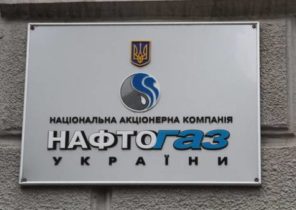
It is expected that Russian will connect into a single, integrated network of air defense missiles s-500, s-400, s-300ВМ4 and With 350 and other weapons systems. As noted by a representative of the American military-industrial complex, even after the collapse of the Soviet Union the Russian defense industry has suffered greatly, Moscow somehow managed to continue work on the creation of modern anti-aircraft missiles without much damage to the combat capability. In fact, some of the new weapons systems, say, s-500, have excellent characteristics in connection with which many leaders of the American military industry, it is questionable that even a stealth aircraft like the F-22, F-35 and B-2 will be able to overcome the area they cover.
The Russian military hopes to soon receive the first samples of anti-aircraft missile systems s-500, produced by the concern “Almaz-Antey”. At the same time continue testing advanced s-350 “Vityaz”, which will eventually replace in service systems s-300PS.
“We expect that the first samples of the s-500 will be delivered in the near future”, — said the TV channel “Russia-24” the commander of Russian troops and missile defense Lieutenant General Victor gumenny.
The new complex, which will form the upper layer of the single layered air defense system of Russia, can hit targets at altitudes of up to 200 kilometers. This means that s-500 will be able to fight in space with the attacking ballistic missiles at ranges of over 600 kilometers. First regiment of s-500 will be deployed to protect Moscow and Central regions of Russia.
It is believed that the system s-500 will be able to detect and simultaneously attack up to 10 ballistic supersonic targets flying at a speed of 7 kilometers per second, and also use missile a direct hit, similar to the complex missile defense THAAD Lockheed Martin.
Like all modern Russian air defense system s-500 should be highly mobile and use a network of radars to obtain data on targets at a great distance. The complex s-500 will enter the radar command and control 91Н6А(M), modernized radar detection and tracking of targets 96Л6-CPU and multi-mode radar intercept 76Т6 and radar intercept 77Т6. This is reported by experts of the project Missile Threat, carried out by the Institute George C. Marshall and Claremont Institute.
Meanwhile, the Russian military has conducted tests of anti-aircraft missile complex medium-range new generation s-350 “Vityaz”. The new system will replace the outdated s-300PS and Supplement such as SAM “Buk-M3”-300ВМ4, s-400 and s-500.
“Testing of anti-aircraft missile system s-350 “Vityaz” continue, the General said humenny. — The first launches were conducted successfully, and the system has confirmed its characteristics. It will be widely used to replace anti-aircraft missile system s-300PS”.
The s-350 is equipped with the new all-aspect radar with electronic scanning of space and the new machine control. Typically, the complex consists of a combat control post mounted on a wheeled chassis, two radars and eight launchers. It can be used the same missile a direct hit with a radar guided, as in the s-400. The system can hit targets at a distance of 120 kilometers and at an altitude of about 30 kilometers. It is capable of capturing 16 goals at the same time, having in its composition of 32 missiles.
It is expected that Russian will connect into a single, integrated network of air defense missiles s-500, s-400, s-300ВМ4 and With 350 and other weapons systems. As noted by a representative of the American military-industrial complex, even after the collapse of the Soviet Union the Russian defense industry has suffered greatly, Moscow somehow managed to continue work on the creation of modern anti-aircraft missiles without much damage to the combat capability. In fact, some of the new weapons systems, say, s-500, have excellent characteristics in connection with which many leaders of the American military industry, it is questionable that even a stealth aircraft like the F-22, F-35 and B-2 will be able to overcome the area they cover.
Dave Majumdar is editor of the National Interest, covering military issues.







